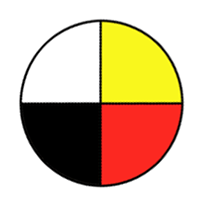Identify locations and processes used to extract Earth's geological resources and examine the impacts of those locations and processes on society and the environment.
SI, DM, CP
| (a) |
Identify questions to investigate arising from practical problems and issues related to the study of Earth's geological resources (e.g., "What types of rocks are best for cement-making or road construction?" and "What are some environmental concerns related to open-pit mining?"). |
| (b) |
Distinguish between rocks and minerals using physical samples, pictures, and/or video recordings and identify the minerals most often found in rocks in Saskatchewan and around the world (e.g., quartz, calcite, feldspar, mica, hornblende). |
| (c) |
Classify rocks and minerals based on physical properties such as colour, hardness, cleavage, lustre, and streak. |
| (d) |
Identify locations of Saskatchewan's primary mineral resources (e.g., potash, gold, diamond, salt, uranium, copper, and graphite) and their primary uses. |
| (e) |
Relate processes used to extract primary mineral resources in Saskatchewan (e.g., open-pit mining, underground mining, and solution mining) to the location, type, and depth of the resource. |
| (f) |
Provide examples of technologies used to further scientific research related to extracting geological resources (e.g., satellite imaging, magnetometer, and core sample drilling). |
| (g) |
Evaluate different approaches taken to answer questions, solve problems, and make decisions when searching for geological resources within Earth (e.g., trial-and-error prospecting versus core sampling). |
| (h) |
Provide examples of Canadian contributions to the scientific understanding and technological developments related to surface and sub-surface geology and mining, and identify societal and economic factors that drive such exploration and research. |
| (i) |
Suggest solutions to economic and environmental issues related to the extraction of geological resources in Saskatchewan (e.g., managing mine tailings and pollutants; reclaiming open pit mining sites; ecological impact of pipelines; resource depletion; maintaining water quality; and increasing urbanization). |
| (j) |
Identify uses for rocks and minerals, such as healing, recuperative powers, and ceremonies, which include ideas not explained by science. |
| (k) |
Research Saskatchewan careers directly and indirectly related to resource exploration. |















